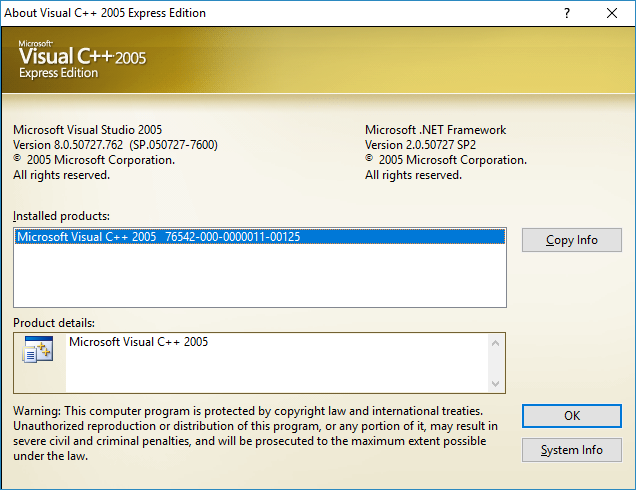So I’m back out, and on my limited machine (I did order something new, but on a group buying thing so it won’t be here for another SIX weeks… but then I’ll be on the road again so if I’m lucky 11 weeks……..) I’m using Visual C++ 2005 Express Edition, which by default includes just enough to compile simple stdio CLI based stuff.  To do anything more complicated you need what is known as the ‘Platform SDK’.  And to match up for the time period I’m using the Windows® Server 2003 SP1 Platform SDK Full Download. And of course various Direct X SDK’s too.
For my benefit (maybe yours too), here is
- Visual C++ 2005 Express Edition.iso
- Visual C++ 2005 Express Edition SP1.exe
- Windows® Server 2003 SP1 Platform SDK Full Download.tar
Instructions to integrate the Platform SDK are here, although I did set this to match the expected paths that were in my setup after installing service pack 1. Â However I still had to manually do step 4:
Update the default.js file (found in %VSINSTALLDIR%\VC\VCWizards\AppWiz\Generic\Application\scripts\1033) and change the two lines that read:
LinkTool.AdditionalDependencies = “kernel32.lib $(NoInherit)”;
to:
// LinkTool.AdditionalDependencies = “kernel32.lib $(NoInherit)”;
And I was all set to go.
To make life easier (for me) this is headers & libs for the platform SDK + Direct X 6 & 7, and only 18 megabytes, instead of hundreds to download platform_directx6_7.7z This has the directories and whatnot where they were expected, although you’ll have to manually add in the Direct X include & library directories, if you want to do anything with Direct X.
From the Tools menu in Visual Studio, select Options. The Options dialog box appears.
From the Options dialog box, expand the Projects and Solutions node and select VC++ Directories. In that section, add the following paths to the appropriate subsection:

